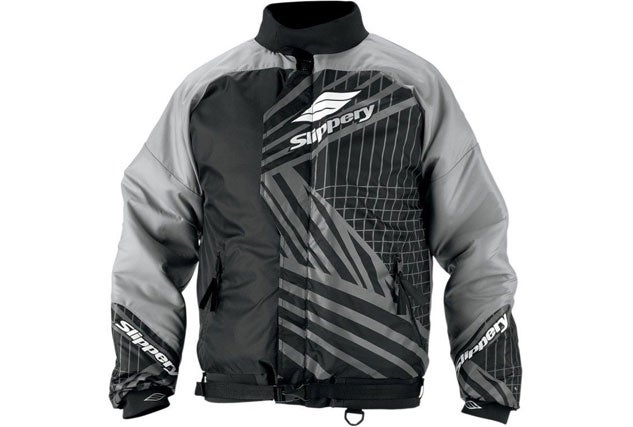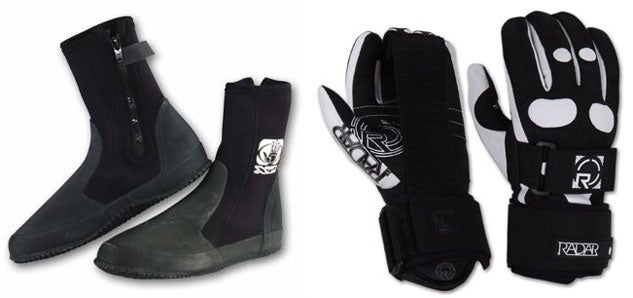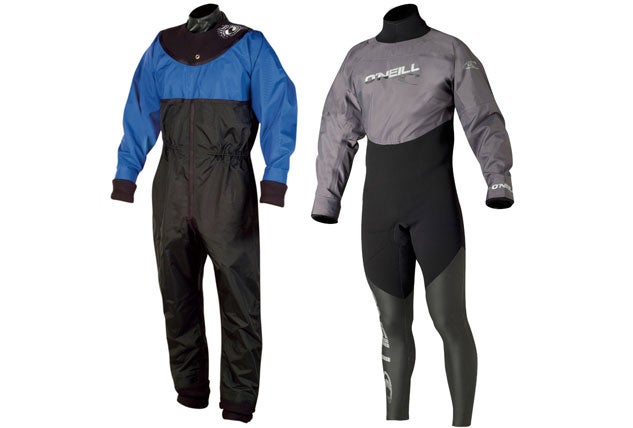How To Extend Your PWC Riding Season Into The Fall and Beyond
Stretch your riding season well beyond the norm
The riding season has come…and for most of the country, pretty much gone. You know the drill. Time to winterize, pack away the gear, and start dreaming about next year.
Depending upon where you live, however, some of you may be able to actually keep on riding. And no, we’re not talking about obvious places like Florida or Southern California. We’re talking about places where there’s a formidable chill in the air, but the water doesn’t freeze. In these conditions, the hearty few who brave the cold can get some of the best, quietest conditions of the year. The catch? You need to prepare. Going out unprepared in these weather conditions is inviting disaster.
Storage Tips For All That Other PWC Stuff
But with the right preparations it’s still possible. All you need is a little more gear…and the motivation to keep riding liquid.
Layer on The Rubber
Chances are you may already have a wetsuit. Just a simple 2-3mm layer of rubber, however, may not cut it this time of year. It may be fine on a relatively mild day if you can almost guarantee you won’t get wet. Otherwise, you better hope it’s thick. For best winter results, look for full suits thicker than 3 mm, especially in key areas like the torso. It’s also a good idea to step up to a suit with taped or sealed seams; should you fall (or even just get a good dousing) they won’t let the water enter like on a normal wetsuit.
 Slippery’s Float Coat will keep you warm and acts as a PFD.
Slippery’s Float Coat will keep you warm and acts as a PFD.As in any active winter sport, layering is also a good idea. Choose a neoprene touring coat, or consider a “float coat” to add above your wetsuit. The added layer provides both insulation and wind protection. A float coat also incorporates a PFD, streamlining your gear.
Six Commonly Overlooked Winterizing Tips for PWC
Whatever you do, don’t forget your extremities. Both gloves and booties should also be thicker to fend off the chill. Find cold-weather-specific styles or, to get more use out of your existing gear, consider adding a neoprene sock and glove liner underneath your normal boots, shoes, and gloves. Headwear is also a must. Again, if you think you can stay somewhat dry, a snowboard beanie will add an added layer of protection and warmth. A better idea, however, is probably a wetsuit-specific neoprene hood. The latter is designed to fit snugly and protect your head and ears.
 You’ll want to invest in good boots and gloves to keep you feet and hands out of the elements.
You’ll want to invest in good boots and gloves to keep you feet and hands out of the elements.Invest in a Dry Suit
When the temperature really starts to drop, nothing beats a dry suit. Like the name implies, a dry suit is designed to keep you totally dry below its surface. Most are loosely cut, and made of a waterproof material to prevent water intrusion. At vulnerable areas like ankles, wrists, and neck, they typically feature tight rubber gaskets to fit ultra-snugly against the skin. Below, it’s easy to layer on long underwear, fleece, or any combination of gear you’d normally wear for winter sports. Just keep in mind a drysuit doesn’t breathe. Make sure your base layers are wicking, and try to avoid overheating. Still, you’ll probably end up damp after any serious riding. Odds are you may not realize it until you go to strip out of the suit later.
 Choose a dry suit to keep cold water away from your skin.
Choose a dry suit to keep cold water away from your skin.It may be hard to find a drysuit at your local personal watercraft dealer, as most PWC-oriented brands have gotten out of the drysuit market. Surf-oriented manufacturers, like O’Neill, are the best bet. Several barefoot ski brands also make drysuits. Check a surf shop if you live near a coast. If not, try an online retailer like Overtons.
Ride With Care
Even with the best gear you can afford, riding in the off-season is not to be taken lightly. Make sure someone knows when you’re leaving, where you’re going, and when you plan to be back. You’ll likely be one of the only people on the water, so it may be hard to find help should a problem arise. For that reason, it’s also a good idea to ride with a buddy, rather than alone. Take a dry bag, and toss in your cell phone and maybe a waterproof, handheld VHF radio.
Winter Storage Tips For Neoprene PWC Gear
Should you take a serious tumble, don’t push your luck. Hypothermia is a real possibility, so it’s better to cut your ride short and get closer to home than venture off. Again, your tolerance for the cold and wet is proportional to how prepared you are to handle it.
It’s also a good idea to be always vigilant out on the water. Though traffic will likely be light, something like a neoprene hood may make it harder to hear other boaters. Stay alert, and watch for traffic, just as you would in summer.
Still, remember to have fun. If you’re prepared for the conditions, riding in the colder months is a great way to push your riding season beyond the norm. It’s also a great way to experience your riding area from a different perspective. You can see the changing fall colors up close, or carve that beautiful glass you often miss out on at the peak of the season.
It sure beats sitting home watching TV…
Get PersonalWatercraft.com in your Inbox!
Like PersonalWatercraft.com on Facebook
Comments
Most Popular

2025 Yamaha JetBlaster PRO 2-Up Review

2024 Kawasaki Jet Ski STX 160X Review

Remembering the Sea-Doo XP

Whatever Happened to the Wetbike?

2025 Yamaha JetBlaster Review













 Your Privacy Choices
Your Privacy Choices